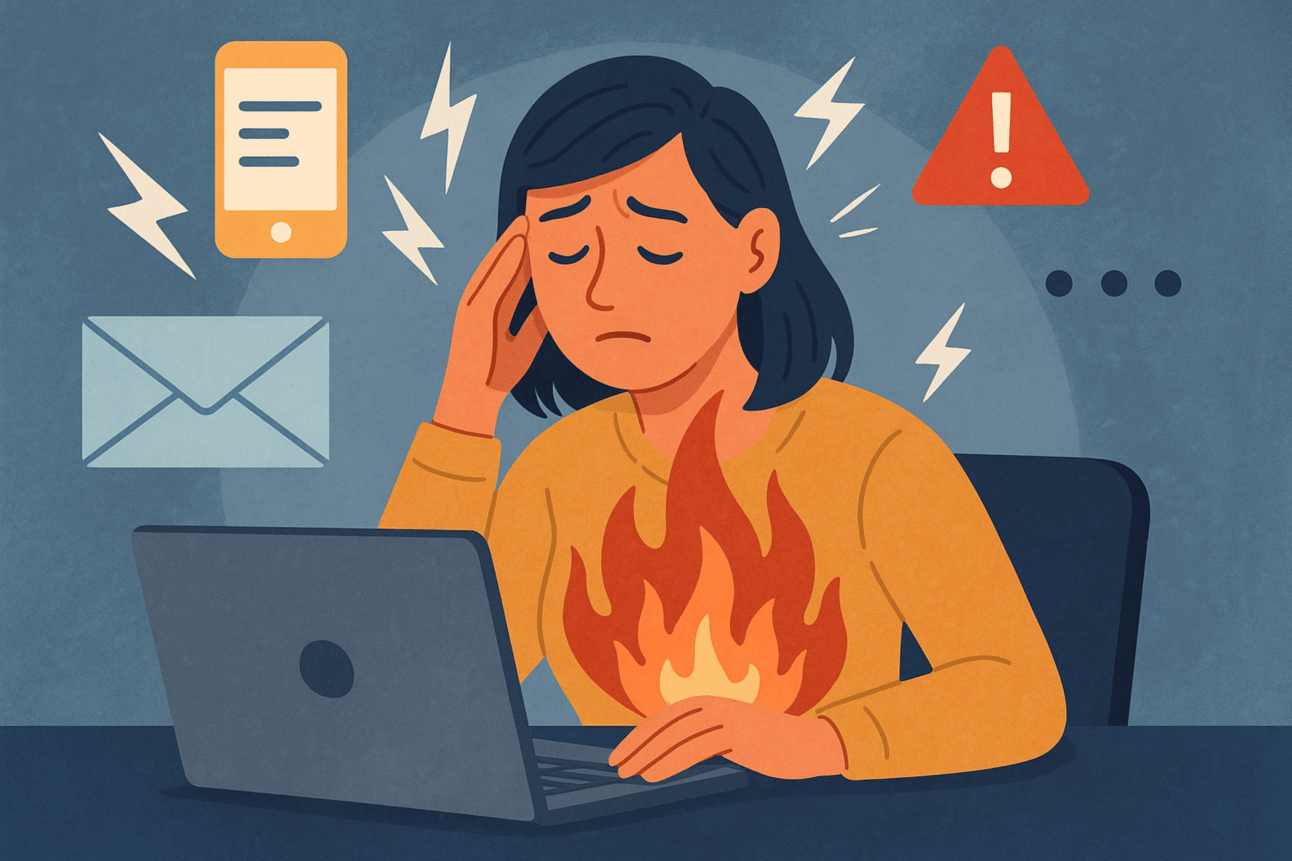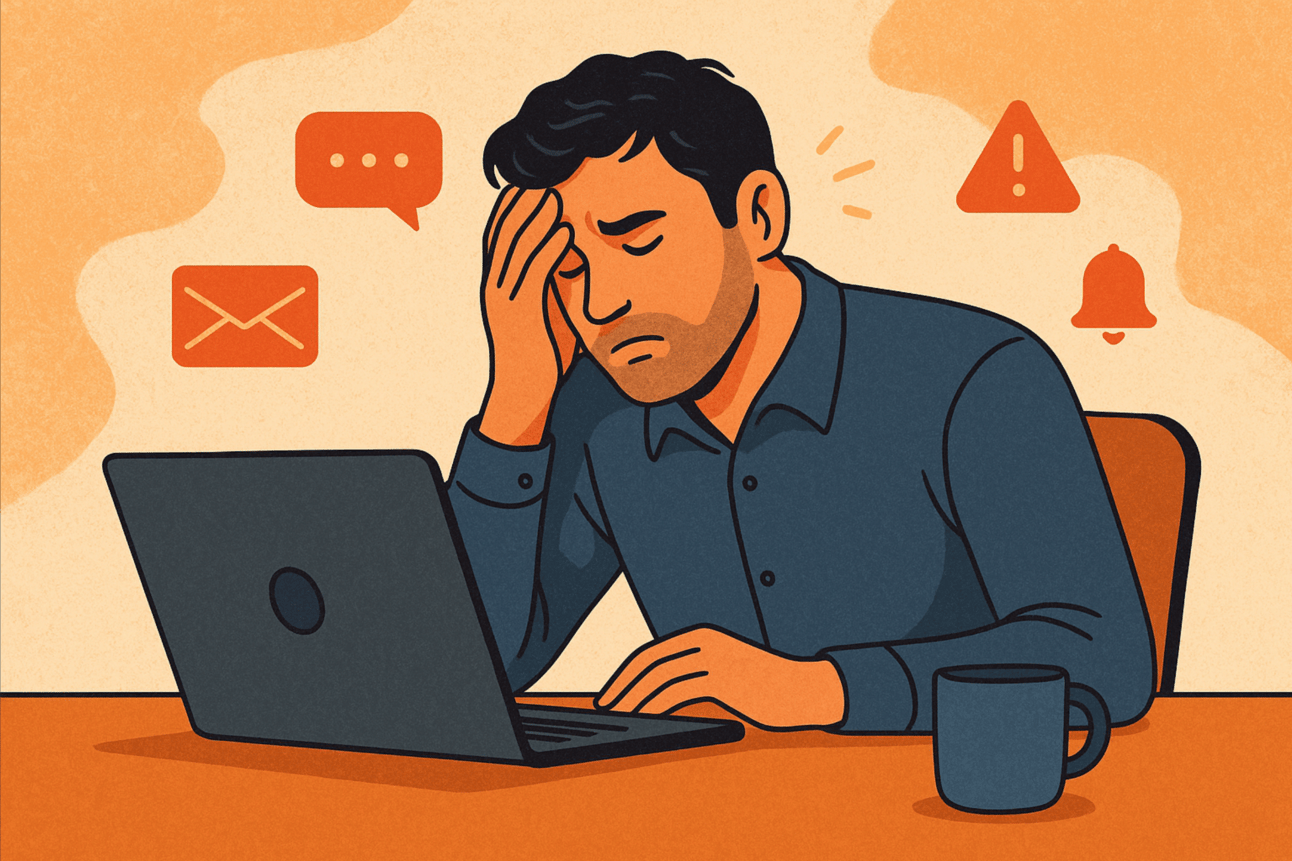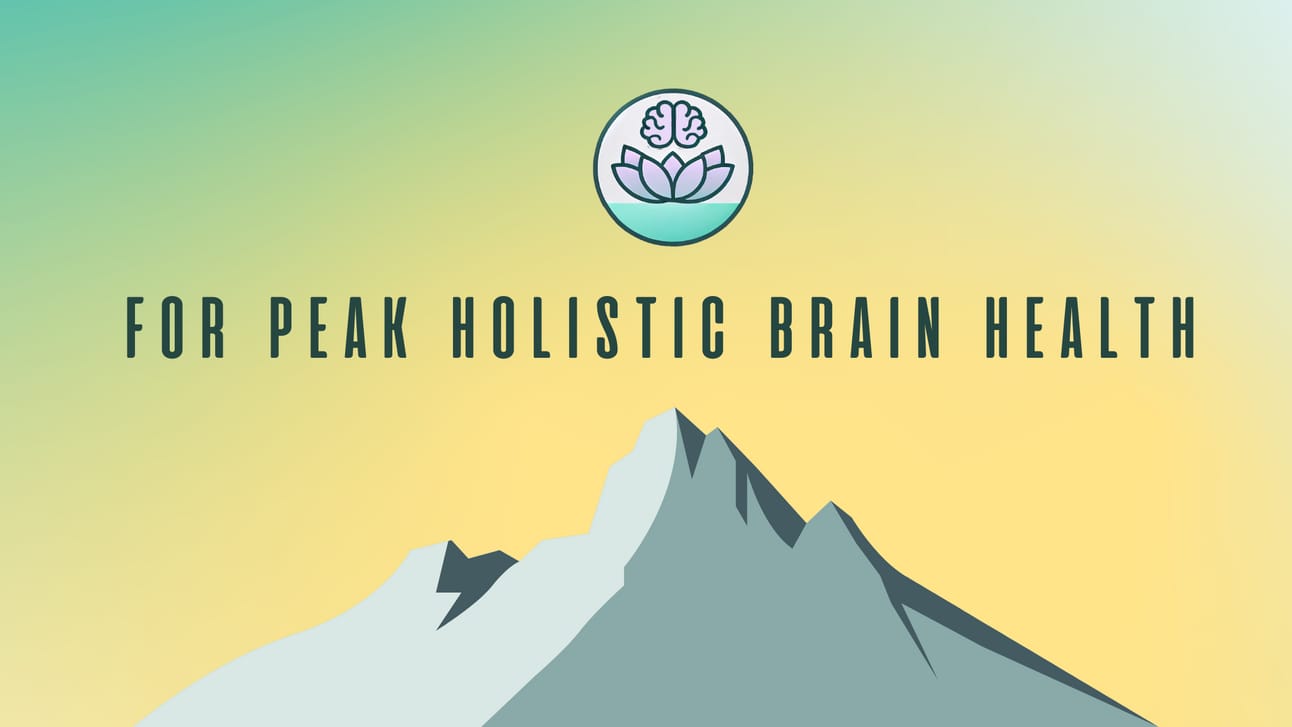- Zen Brain Blueprint
- Posts
- 🔥 Digital Inflammation: The Hidden Burnout You Can’t See
🔥 Digital Inflammation: The Hidden Burnout You Can’t See
How screen overexposure disrupts hormonal, immune, and neural balance—and what to do about it
Hello digital warrior,
You’re not imagining it—more screen time, more stimulation, and more “doing” doesn’t always lead to more well-being. Your body might be telling you something your mind is too distracted to hear:
That underlying tension?
That weird fatigue that doesn’t go away with sleep?
That fuzzy focus and short fuse?
It might be digital inflammation—a subtle yet chronic stress state caused by modern tech overload. This is a new form of anxiety that is a sort of brain pain, trying to tell you that you have overdone it and need a break to reset, restore, or relax.
Let’s unpack what that means—and more importantly, what you can do to heal.

The Neuroscience of Digital Inflammation
Chronic screen time—especially with blue light exposure, task switching, and passive scrolling—triggers a cocktail of physiological disruptions:
🔁 Cortisol Dysregulation
Your stress hormone rises not just from emotional overload, but from sensory and cognitive overstimulation. The constant “ping-ping-ping” rhythm of notifications trains your nervous system to stay hypervigilant.
🧠 Neuroimmune Stress
Excessive screen time has been linked to increased production of pro-inflammatory cytokines, particularly IL-6 and TNF-alpha. This form of low-grade inflammation disrupts focus, energy, mood, and immunity.
🛌 Sleep Disruption
Even small doses of evening screen light can reduce melatonin production and shift your circadian rhythm, impairing the restorative phases of deep sleep your brain and body need.
Common Signs of Digital Inflammation
If any of these ring a bell, your system might be signaling a need for recalibration:
Brain fog and sluggish thinking
Mood swings, irritability, or anxious tension
Trouble falling or staying asleep
Lower resilience to stress
Eyestrain, headaches, or sensory overload
Feeling “wired and tired” by day’s end
This is not weakness. It’s your biology giving you feedback. The good news? There’s a way back to balance.
Recovery Rituals to Reverse the Damage
Let’s turn off the fire alarm and cool the system.
🌞 1. Circadian Light Rebalancing
✅ Try This:
10–15 minutes of morning sunlight within 30 minutes of waking
Avoid screens or use blue light blockers after sunset
Step outside during lunch to sync midday cortisol with natural rhythms
🧠 Why it works: Natural light regulates your HPA axis, reducing stress hormones and promoting serotonin and melatonin balance.
🌬️ 2. Breath as an Anti-Inflammatory Tool
✅ Try This:
4-7-8 breathing (inhale 4, hold 7, exhale 8) for three rounds
Try alternate nostril breathing or resonance breathing (5.5s inhale, 5.5s exhale)
🧠 Why it works: Conscious breathing activates the vagus nerve, restoring parasympathetic calm and reducing neuroinflammation.
🏞️ 3. Nature & Movement for Neural Detox
✅ Try This:
20-minute nature walk—no phone, no agenda
Gentle mobility flow or yoga nidra after work
Forest bath or barefoot grounding session each week
🧠 Why it works: Moving outdoors in nature supports lymphatic drainage, reduces cortisol, and repairs overstimulated neural circuits.
🌿 4. Adaptogens & Brain-Supportive Nutrition
✅ Try This:
Sip on ashwagandha, rhodiola, or holy basil tea during the day
Include omega-3-rich foods, turmeric, and polyphenols in meals
Stay hydrated and magnesium-replenished
🧠 Why it works: Adaptogens buffer stress hormones and support the balance of the neuroendocrine system. Anti-inflammatory nutrients reduce oxidative stress in the brain.

🧬 Research Spotlight
📚 Cortisol & Screens: A 2019 study published in Psychoneuroendocrinology found elevated cortisol levels in people with excessive screen time, even in the absence of emotional stressors.
📚 Blue Light & Inflammation: Research from the Journal of Biological Rhythms confirms blue light exposure at night reduces melatonin and increases nighttime cortisol and inflammation markers.
📚 Nature & Recovery: Time in nature reduces IL-6 and CRP, two key markers of chronic inflammation, per a 2021 meta-analysis in Environmental Research.
Bottom Line
Burnout isn’t just mental.
It’s biological.
And in the digital age, inflammation often starts on your screen.
Start small. Step into the sun. Breathe deeply. Move your body. Nourish your nervous system.
This is not about quitting tech—it’s about upgrading your relationship with it.
Quote of the Week
"Almost everything will work again if you unplug it for a few minutes… including you." – Anne Lamott
Unplug, reset, and stay Zen, my friends!
